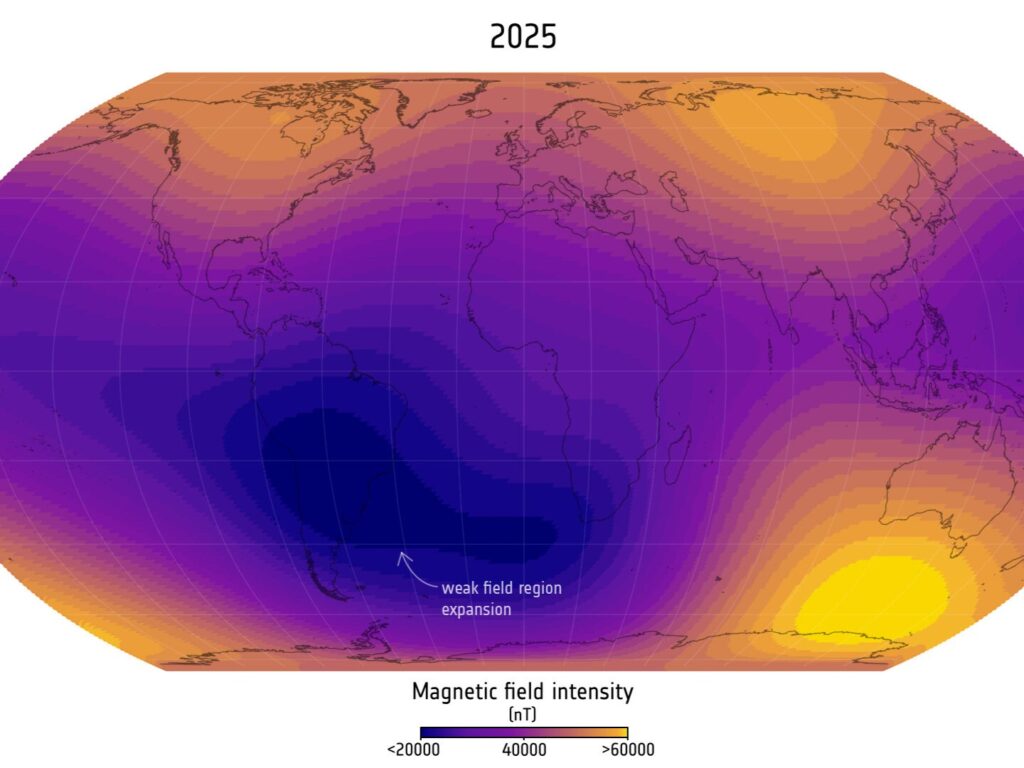
The European Space Agency’s (ESA) Swarm satellite mission has identified a rapidly expanding anomaly in the Earth’s magnetic field. This anomaly, located over the South Atlantic region, is growing at an unprecedented rate and has significant implications for satellite operations and global positioning systems.
The anomaly, known as the South Atlantic Anomaly, has been monitored by the Swarm satellites since their launch in 2013. Recent data from the satellites indicates that the area of weakened magnetic intensity is not only expanding but also shifting westward. Researchers are concerned that this trend could disrupt electronic systems on satellites, leading to potential failures or inaccuracies in navigation.
ESA’s Swarm mission consists of three satellites working together to provide detailed insights into the Earth’s magnetic field. According to the agency, the satellites collect data that reveals both short-term fluctuations and long-term trends in geomagnetic activity. The data is essential for understanding how the magnetic field protects the planet from solar radiation and cosmic rays.
Understanding the Impact of the Anomaly
The South Atlantic Anomaly is characterized by a drop in magnetic intensity, which exposes satellites to higher levels of radiation. This exposure can result in malfunctioning electronics, degradation of satellite instruments, and issues with data transmission. As the anomaly grows, the risk for satellites operating in the region increases.
Researchers from the University of Leeds estimate that the anomaly’s footprint has expanded significantly, covering a region stretching from the southern part of Africa to parts of South America. This growth is attributed to changes in the Earth’s core dynamics, which influence the geomagnetic field. Understanding the ongoing changes in this anomaly is crucial for scientists as they aim to develop mitigation strategies for affected satellites and other technologies.
Future Research and Monitoring Efforts
ESA emphasizes the need for continuous monitoring of the South Atlantic Anomaly to better predict its future behavior. The Swarm satellites are equipped with advanced instruments that allow scientists to analyze the magnetic field in unprecedented detail. This data will contribute to a deeper understanding of the underlying processes driving the anomaly and help inform future satellite designs.
As the anomaly continues to evolve, researchers hope to address the challenges it presents for satellite operations and global communications. The findings from the Swarm mission will play a vital role in ensuring that future space missions can effectively navigate the challenges posed by this growing magnetic field anomaly, safeguarding both technology and human activities reliant on satellite systems.
The implications of these findings extend beyond satellite technology, as they may also provide insights into broader geophysical processes. As scientists unravel the complexities of the Earth’s magnetic field, the data gathered by ESA’s Swarm mission will offer valuable contributions to the scientific community and inform future research initiatives.






